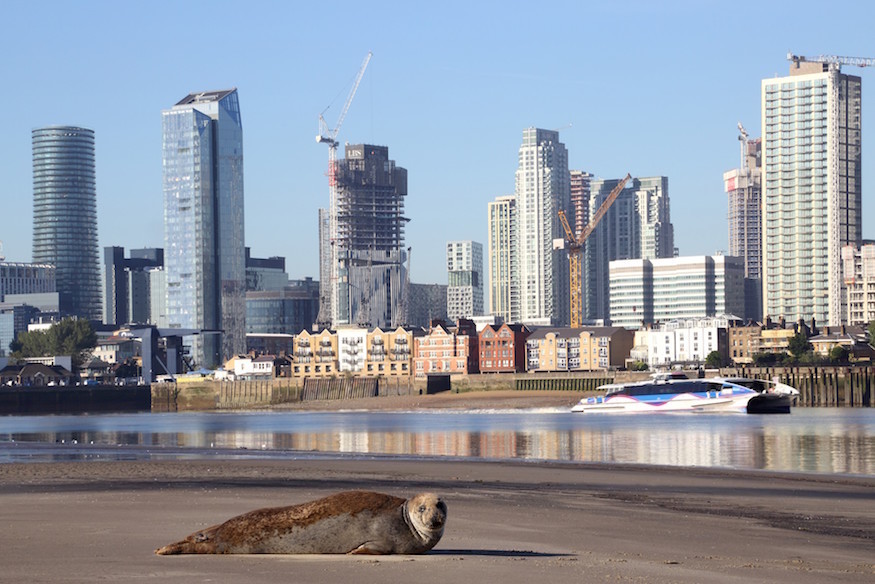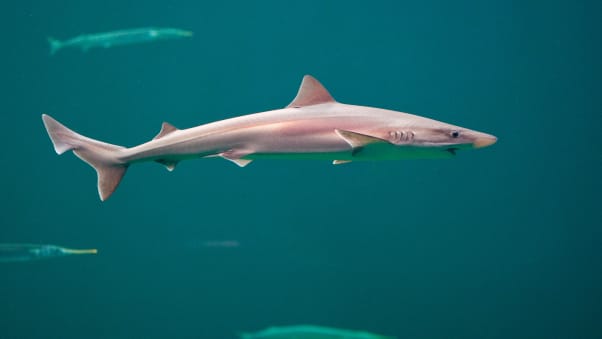Back in 1957, the famous River Thames was described as filthy, strange opaque brown in colour and smelling of rotten eggs. That same year, The Natural History Museum declared it as biologically dead, meaning that the water quality was so poor and the oxygen levels so low that it could no longer support life. The Guardian described it as ‘a badly managed open sewer’. Around the same time, investigations into better sewage treatment and studies into key environmental indicators began.
This month saw the first ever State of the Thames report, conducted by the Zoological Society of London, and whilst there were some good outcomes, the study, which saw a health check carried out on 215 miles of the Thames, proved that there is still a lot of work to be done in terms of cleaning up the river and maintaining it for future generations

photo credit @ Bill Green Thames Festival Trust
Since 1957, when it was believed that barely anything called the river home, bird and marine mammal species living in and around the river have increased with it becoming increasingly common over recent years to see seals and dolphins in the river, along with the occasional rather lost whale. Seahorses and eels are now residing in the Thames, and the study has found that a number of species of shark, including the Tope, Starry smooth-hound and spurdog species are also now calling the river home. It has been found that saltmarsh habitat, which capture carbon, have increased as well. However, the range of fish species living in the river has seen a decrease.

photo credit @ blickwinkel/Alamy Stock Photo
It is thought that the population of Tope Sharks, which are hunted around the world for their valuable fins, are using the rivers estuary as a breeding ground, which goes to show the improved water quality and higher oxygen levels in the river. The spurdog shark, which gets its name from the spines on its dorsal fin, is considered endangered and is amongst a very small number of venomous fish living in UK waters along with Weever fish and Stingray. The avocet, a migratory wading bird, is now another Thames success story. The bird was declared extinct as a breeding species in Britain way back in 1842 but has been making a comeback since the second world war. Over the last three decades, it’s population among the tidal Thames has more than doubled. Director of conservation and policy at the Zoological Society of London, Andrew Terry, states in the report that the Thames is ‘home to a myriad of wildlife as diverse of London itself’

photo credit @ ZSL
Overall, the study found that the river is home to more than 115 species of fish, along with 62 species of bird and that it now has almost 600 hectares of crucial saltmarsh habitat. However, it has been found that the Thames is showing signs of being vulnerable to the effects of climate change. The river’s temperature is rising at an average of 0.2 degrees Celsius per year, running the risk of damaging valuable ecosystems and wildlife stocks in animals are forced to adapt.
The Environment Agency’s ‘Thames Estuary 2100 Plan’ sets out a long term approach to adapting to rising sea levels, laying out plans to increase habitats such as mudflats and tidal marshes on the Thames.
We are pleased to support the State of the Thames Report published today. If we are going to tackle the climate emergency, nature needs to be at the heart of our solution, both in slowing the pace of future change and adapting to the changes that we are already seeing.

photo credit @ ZSL
The State of the Thames report highlights the importance of protecting the river and realising the impact of climate change upon it, both to conserve the waterway as a habitat for nature and to protect the city of London from the effects of rising sea levels.
